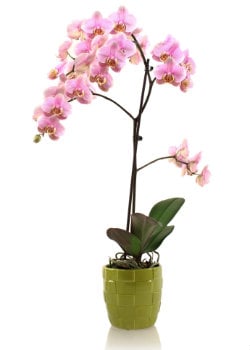
Whether you’re a novice or a seasoned gardener, caring for your orchid can raise many questions. Am I over watering? How should its leaves look? How do I know what a healthy plant looks like?
To help you answer these questions, we’ve compiled a visual guide of some of the most common phalaenopsis orchid afflictions and treatments, so you’ll be able to best care for your blooms.
Here is a list of the top five phalaenopsis orchid afflictions and what you can do about them.
Root rot happens when your phalaenopsis orchid is exposed to too much water. It can be stopped if you catch it quickly. Signs of root rot include: buds that drop for no apparent reason and black squishy roots.
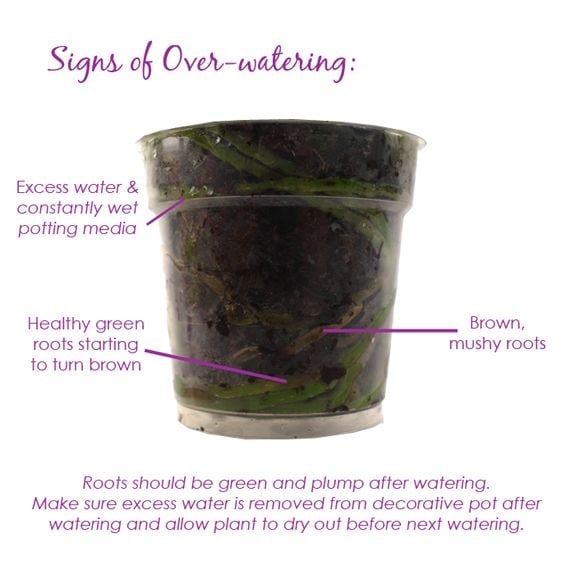
What You Can Do: Don’t let your orchid sit in water, and, when watering, be sure to let the water drain entirely through the container.
Another consequence of over watering in combination with low temperature and poor air circulation, crown rot presents as subtle discoloration of the plant at the center or base of the leaves.
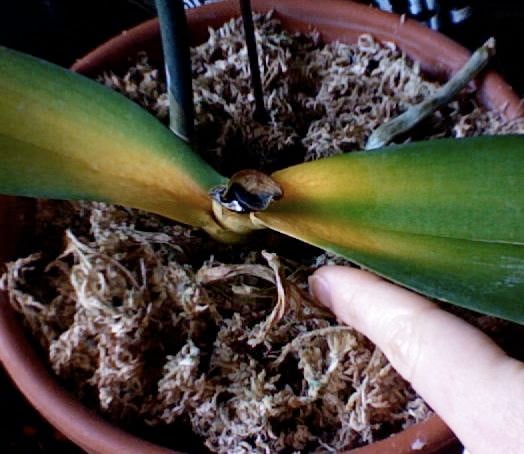
What You Can Do: To prevent crown rot, you’ll want to water under the leaves by gently lifting them out of the way. If you’re dealing with a case of crown rot, you can attempt to save the plant by repotting.
Bacterial brown spot begins as a soft watery lesion usually on a leaf that can turn brown and emit a foul smelling liquid in the later stages.
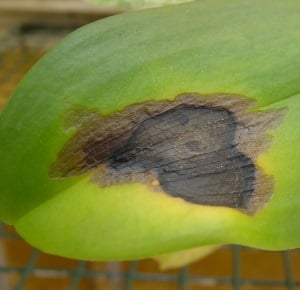
What You Can Do: Remove the affected material using a sterilized cutting tool. You’ll also want to isolate the affected orchid to avoid the spread of the bacteria. You can reduce the chances of your orchid contracting the bacteria by using proper sanitation practices, reducing leaf wetness and improving air circulation.
Similar to the bacterial brown spot, the bacterial soft spot presents as a foul-smelling wet spot on an orchid’s leaf that usually expands rapidly, making the entire leaf soft and slimy.
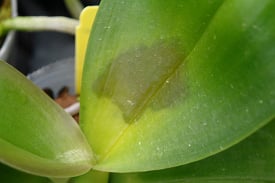
What You Can Do: As with the bacterial brown spot, you’ll want to remove the affected material using a sterilized cutting tool, improving air circulation and lowering humidity.
Caused by a fungus, botrytis blight and botrytis petal blight appear on the flowers of orchids as little brown spots. Some may become larger and have a pink margin.
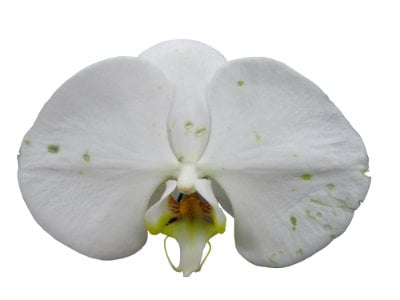
What You Can Do: Provide good air circulation and good sanitation to your blooms. When watering, avoid getting the flowers and leaves wet.
For more information to keep your orchid healthy, download this free guide on common orchid mishaps and how to fix them.
Photo credit: The Orchid Care Lady, Bich Lien2011

Copyright Just Add Ice® Orchids 2023